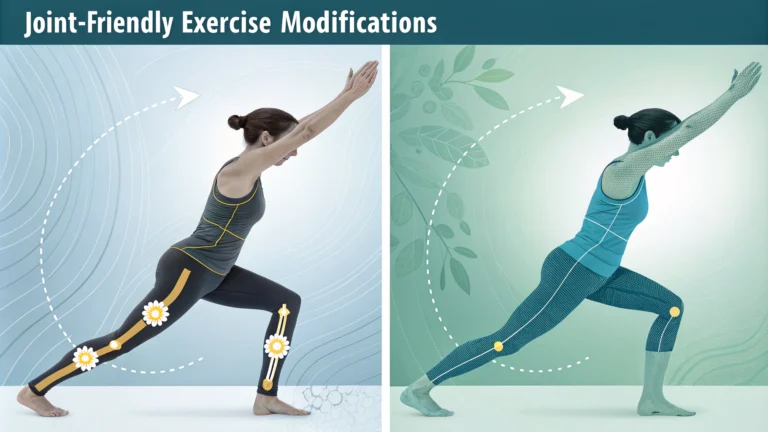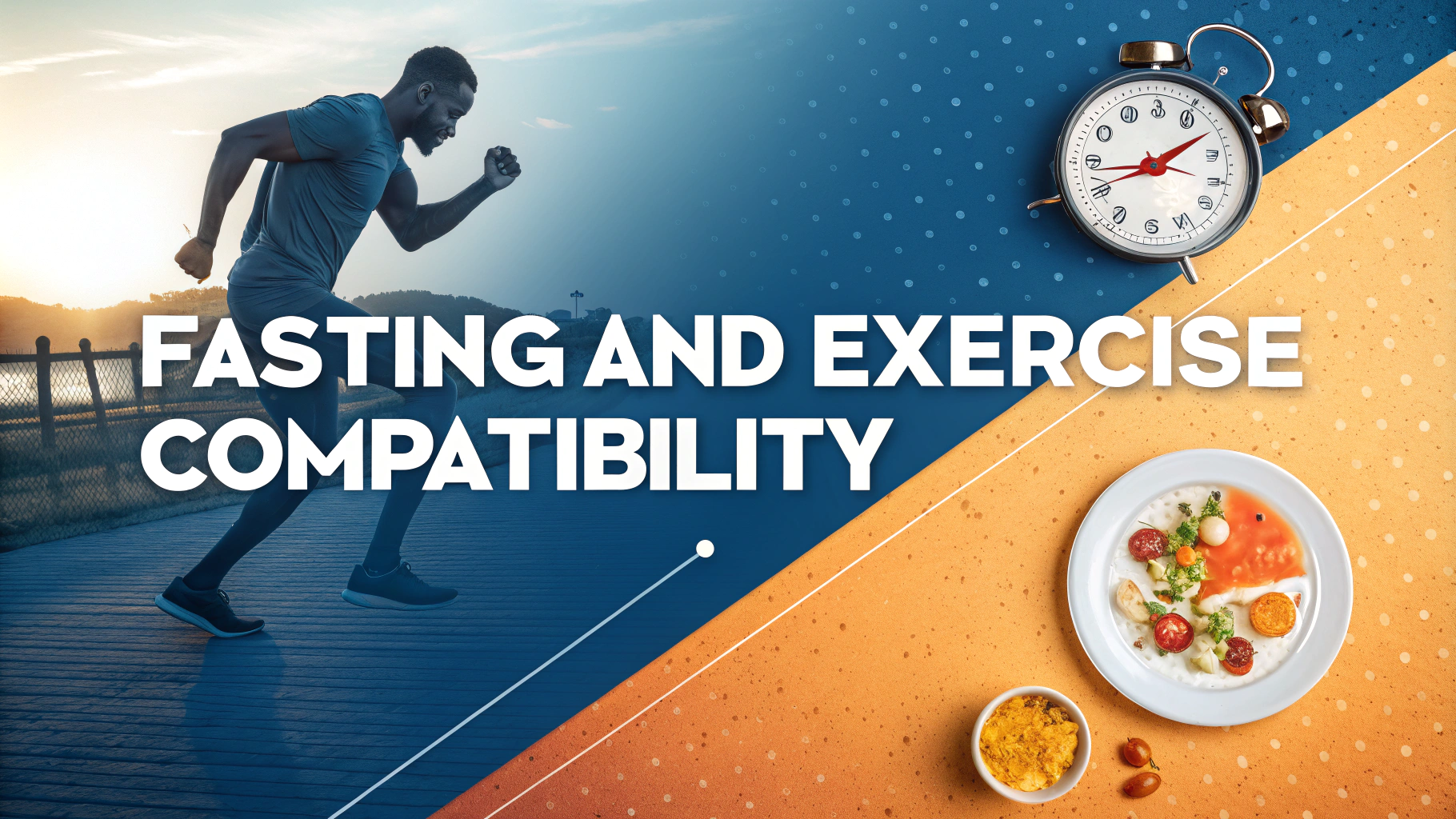Joint-friendly exercises help people stay active while managing conditions like arthritis, previous injuries, or general joint sensitivity.
Low-Impact Cardio Options
- Swimming or water aerobics (natural resistance with minimal joint stress)
- Stationary cycling (adjustable resistance levels)
- Elliptical machines (fluid motion without impact)
- Walking on soft surfaces like tracks or grass
Modified Strength Training
Use resistance bands instead of heavy weights for upper body exercises.
Replace traditional squats with wall slides or chair squats for better knee support.
Modify push-ups by performing them against a wall or with elevated hands on a stable surface.
| Traditional Exercise | Joint-Friendly Alternative |
|---|---|
| Running | Pool running or walking |
| Jump rope | Step touches |
| Lunges | Step-ups (lower height) |
Equipment Recommendations
- Proper shoes: Brooks Glycerin or New Balance Fresh Foam for cushioning
- Exercise mats: At least 1/2 inch thick for floor exercises
- Resistance bands: TheraBand or SPRI sets with various resistance levels
Safety Tips
Start with 10-15 minute sessions and gradually increase duration as tolerance builds.
Apply heat before exercise to warm up joints and muscles.
Use ice after exercise if joints feel irritated (15 minutes maximum).
Red Flags
- Stop if sharp pain occurs (different from normal muscle burn)
- Avoid exercises that cause joint swelling
- Skip high-impact activities during joint flare-ups
Professional Support
Contact the Arthritis Foundation (www.arthritis.org) for local exercise programs and resources.
Consider working with a physical therapist for personalized modifications (Find a PT near you).
Helpful Resources
- American College of Rheumatology: www.rheumatology.org
- National Institute of Arthritis and Musculoskeletal Diseases: www.niams.nih.gov
Stretching and Flexibility
Gentle stretching helps maintain range of motion and reduces joint stiffness when done properly.
Essential Stretches
- Hamstring stretches while seated
- Shoulder rolls and arm circles
- Gentle neck rotations
- Hip flexor stretches using chair support
Mind-Body Exercises
These practices combine gentle movement with mental focus and breathing techniques.
- Tai Chi – improves balance and reduces fall risk
- Gentle yoga – emphasize modified poses
- Chair yoga – suitable for limited mobility
- Pilates – focus on core strength
Progress Tracking
Monitor exercise tolerance and joint health using:
- Weekly mobility assessments
- Pain level diary
- Activity duration records
- Range of motion improvements
Conclusion
Joint-friendly exercises provide safe and effective ways to maintain fitness while protecting sensitive joints. Success comes from consistent practice, proper form, and listening to your body’s signals.
Remember to:
- Start slowly and build gradually
- Maintain proper form over speed or intensity
- Stay consistent with your chosen activities
- Seek professional guidance when needed
FAQs
- What are the best low-impact cardio exercises for people with joint issues?
Swimming, water aerobics, stationary cycling, elliptical training, and rowing are excellent low-impact cardio options that minimize stress on joints while maintaining cardiovascular fitness. - How can I modify squats to make them more joint-friendly?
Perform wall slides, use a chair for support, reduce depth, or try box squats. Adding resistance bands instead of weights can also decrease joint stress while maintaining muscle engagement. - Which exercises should I avoid if I have knee problems?
Avoid deep lunges, high-impact jumping exercises, full-depth squats, and running on hard surfaces. These activities can place excessive stress on knee joints. - What’s the best way to warm up before joint-friendly exercises?
Start with 5-10 minutes of light walking or cycling, followed by gentle dynamic stretches and mobility exercises for major joints. Avoid static stretching when cold. - How often should I exercise with joint conditions?
Start with 2-3 sessions per week, allowing 48 hours between workouts for recovery. Monitor joint response and gradually increase frequency as tolerated. - What role does proper form play in joint-friendly exercises?
Proper form is crucial for preventing joint stress. Work with a qualified trainer initially to learn correct techniques, and always prioritize form over weight or repetitions. - Are resistance bands better than weights for people with joint issues?
Resistance bands often provide smoother resistance with less joint stress compared to free weights, making them an excellent option for strength training with joint conditions. - What type of shoes are best for joint-friendly workouts?
Choose shoes with adequate cushioning and support, particularly those designed for your specific activity. Replace them regularly to maintain proper shock absorption. - Should I apply ice or heat before/after joint-friendly exercises?
Apply heat before exercise to warm up tissues and improve flexibility. Use ice after exercise if joints feel inflamed or sore, applying for 15-20 minutes. - How can I tell if an exercise modification is working properly?
Monitor pain levels during and after exercise. Mild muscle soreness is normal, but sharp or lasting joint pain indicates the need to adjust the modification or consult a healthcare provider.







